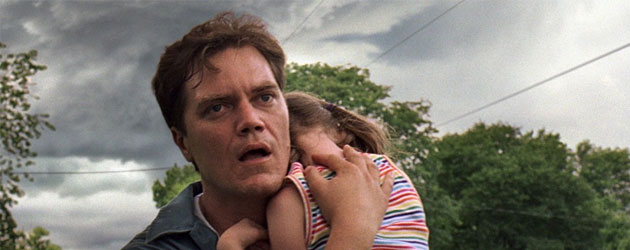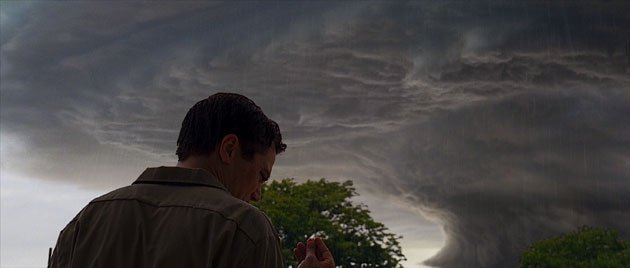In rural Ohio, a construction worker named Curtis has ongoing nightmares that a natural disaster of apocalyptic proportions is imminent. He is often lucid and yet the recurring nature of these dreams begin to chip away at Curtis’ state of mind. For he is not alone. He has a wife Samantha and a young mute daughter Hannah.
Curtis decides to take action. He struggles to pay the rent and save money for an operation that could potentially restore Hannah’s hearing but against his better judgment, he decides to pour money into building an underground bunker, in case the nightmare scenario in his dreams becomes a reality.
This puts an enourmous strain on his relationship with his wife who has been understanding to a point. He then foolishly begins to borrow work supplies to finish the job, but when he is found out, he loses his job. Curtis reaches a breaking point where he risks losing his wife and daughter over the very shelter he built to protect them.
Take Shelter is an unusual film. It is very literal in its projection of an intangible concept – a father and husband’s innate desire to provide shelter and safety for his family.
I think there are several different ways to read the film. If taken on face value, it can be about the toll that mental illness can have on an otherwise happy marriage. It can be about how a ravaged economy can strip a man of his dignity to provide for his family. It can be about how a man overcompensates to provide a safe environment for a disabled child.
Central to holding your engagement in a film that is ostensibly about a man building a shed are the performances by Michael Shannon as Curtis and Jessica Chastain as Samantha. They share a believable chemistry as a married couple and both instill a sense of sympathy in their characters. Shannon is a terrific everyman and Chastain possibly risks being typecast by playing the exhasperated housewife so convincingly not once but thrice in 2011 (see also: The Help, The Tree of Life). I’m not sure if this was by design but I didn’t really side with one person over the other when they fought. I felt bad for both.
The ending of the film raises more questions and is as open to interpretation as the rest of the film. Whether the impending storm is real or a manifestation in the minds of Curtis and Samantha is not important. By the final stages of the film, whats important is that they see it together.
 The FAT Website est. 1999
The FAT Website est. 1999






